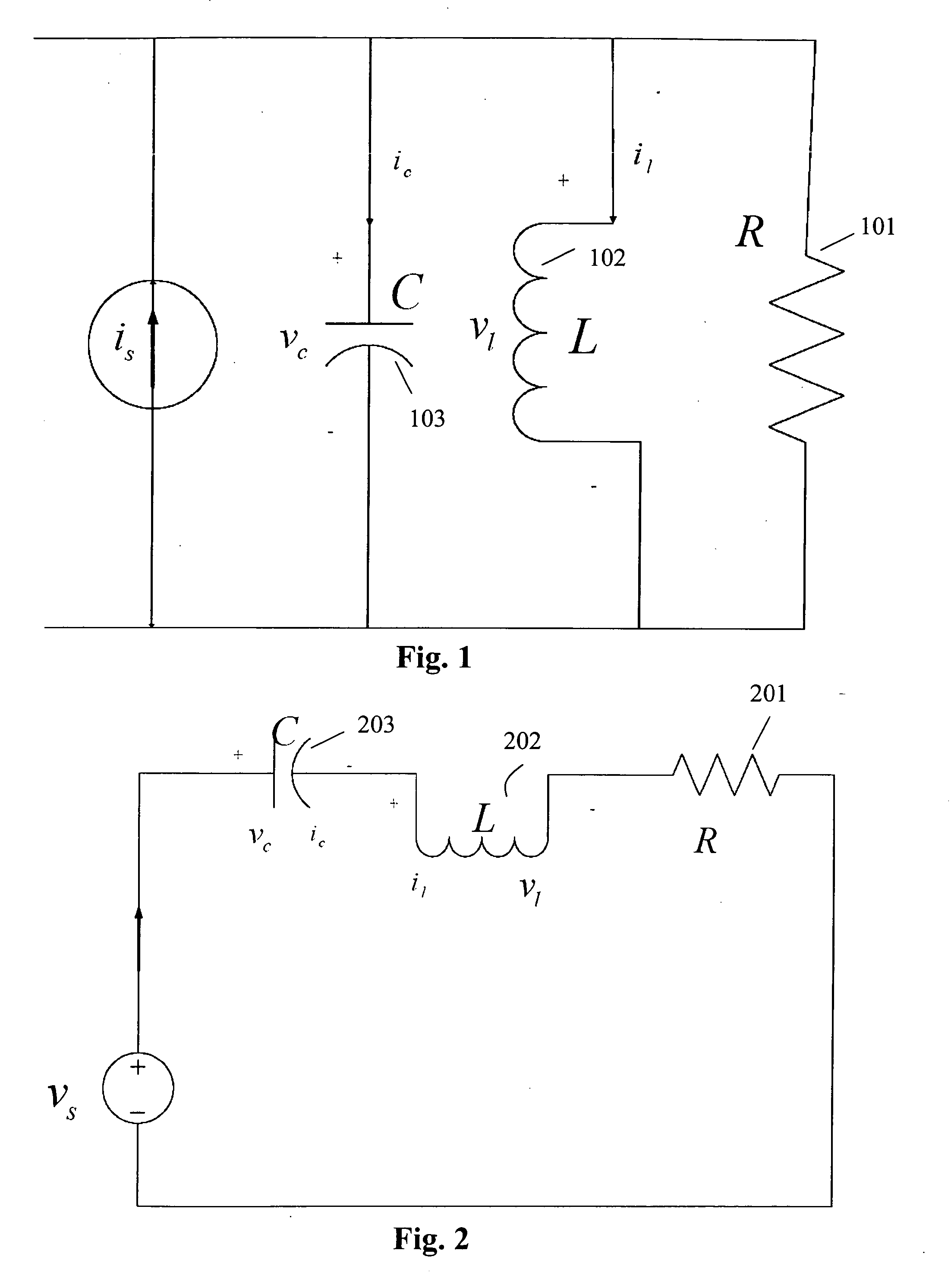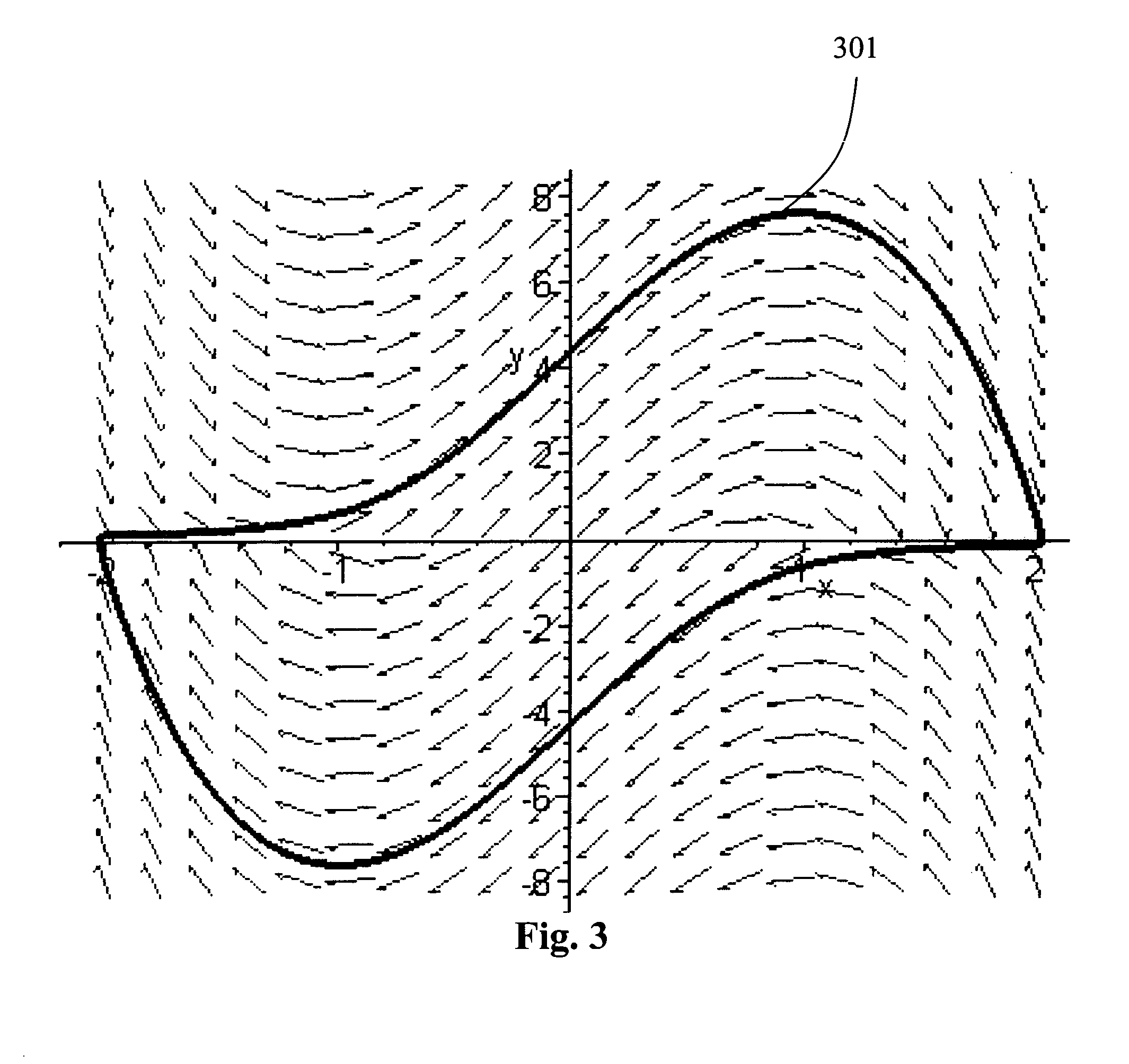Spectral resistor, spectral capacitor, order-infinity resonant tank, EM wave absorbing material, and applications thereof
a technology of em wave absorbing material and spectral resistor, which is applied in the field of nonlinear and/or dynamic electric circuits and systems, can solve the problems of affecting the performance of dynamic impedance matching to nonlinear loads, affecting the overall impedance of the system, and affecting the performance of dynamic impedance matching, etc., and achieves the effect of low performance and best power quality
- Summary
- Abstract
- Description
- Claims
- Application Information
AI Technical Summary
Benefits of technology
Problems solved by technology
Method used
Image
Examples
Embodiment Construction
1 Elasticity of Electricity
[0094] First of all, the “Elasticity of Electricity” is derived based on Riemann-Lebesgue lemma for supporting the possibility of constructing an order-∞ resonant tank. As disclosed on page 313 of [4] and pages 171-174 of [20], it is assumed that power is a trigonometric Fouries series generated by a function g(t)εL(I), where g(t) should be bounded, and L(I) denotes Lebesgue-integrable on the interval I. Then, for each real β we have limω->∞∫Ig(t)sin(ω t+β)ⅆt=0or taking β=π2+β,(1)limω->∞∫ig(t)cos(ω t+β)ⅆt=0(2)
where equation (1) or (2) is called “Riemann-Lebesgue lemma” and the parameter ω is a positive real number. In fact, this parameter ω is an angular frequency 2πf term. If g(t) is a bounded constant and ω>0, it is natural that the equation (1) can be further derived as ∫absin(ω t+β)ⅆt=cos(a ω+β)-cos(b ω+β)ω≤2ω
where [a, b]εI is the boundary condition and the result also holds if on the open interval (a, b). F...
PUM
 Login to View More
Login to View More Abstract
Description
Claims
Application Information
 Login to View More
Login to View More - R&D
- Intellectual Property
- Life Sciences
- Materials
- Tech Scout
- Unparalleled Data Quality
- Higher Quality Content
- 60% Fewer Hallucinations
Browse by: Latest US Patents, China's latest patents, Technical Efficacy Thesaurus, Application Domain, Technology Topic, Popular Technical Reports.
© 2025 PatSnap. All rights reserved.Legal|Privacy policy|Modern Slavery Act Transparency Statement|Sitemap|About US| Contact US: help@patsnap.com



